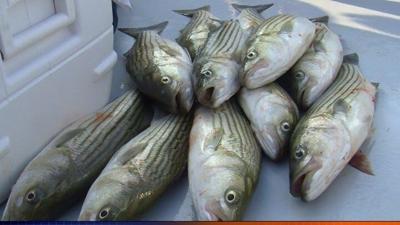CHESAPEAKE BAY - The Atlantic States Marine Fisheries Commission (ASMFC) held a meeting this week to review recent studies that suggest the Chesapeake Bay’s striped bass (or rockfish) populations continue to struggle.
According to the Chesapeake Bay Foundation,a 2024 stock assessment update showed the number of rockfish remains below sustainable numbers despite multiple recent efforts to reduce their mortality. Studies conducted in Maryland and Virginia suggest similar issues with lower levels of juvenile fish in consecutive years.
“If an upcoming stock assessment prior to the rebuilding deadline of 2029 indicates that the stock is not projected to rebuild by 2029, with a probability greater than or equal to 50 percent, the Board can respond via Board action, essentially by changing management measures via a vote to pass a motion, as opposed to an addendum or an amendment,” Dr. Katie Drew said at the ASMFC meeting.
Drew went on to say that new efforts to reduce mortality could include quota reductions in the commercial sector or altering the size, bag, and season for the recreational sector. Drew did note that the amount of restrictions the ASMFC could place on recreational fishermen could be limited.
“There is not a lot we can do that we have not already done on that front,” Drew added.
The ASMFC voted Wednesday to meet again in December to weigh further actions to be possibly implemented for the 2025 fishing season.
“The current trajectory of our striped bass population is alarming,” Chesapeake Bay Foundation Maryland Executive Director Allison Colden said following the ASMFC’s meeting. “Without continued diligence by ASMFC and proactive conservation by the Board, the possibility of rebuilding the striped bass stock will continue to slip further from our reach. Protecting the remaining strong year classes spawned in 2015 and 2018 must be a top priority for any management actions considered by the Board in December. We cannot delay efforts to protect these important spawning fish.”





